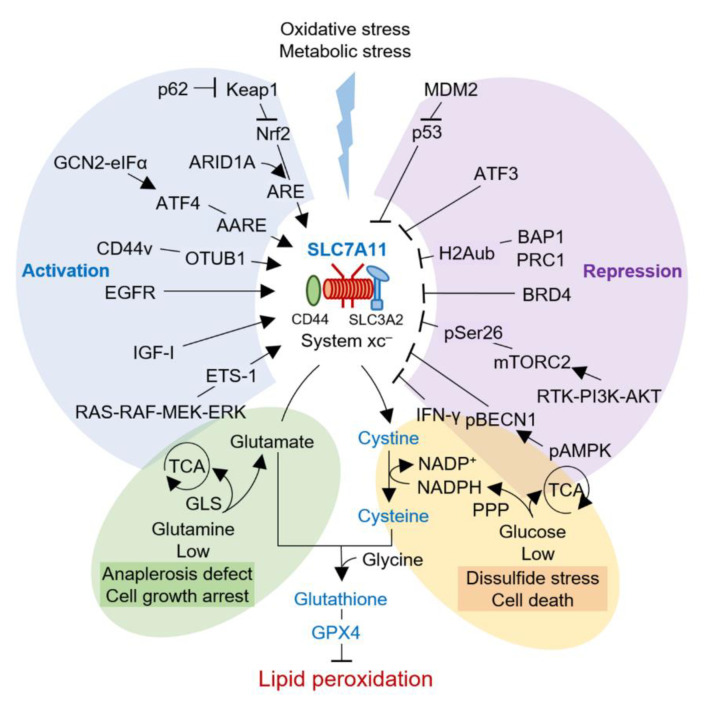Figure 2.
Regulators of the SLC7A11–cysteine–GSH axis in cancer cells. Cellular cysteine is mainly acquired by cystine uptake from extracellular sources via SLC7A11. SLC7A11 expression can be activated or repressed via various regulatory mechanisms at the transcription, translation, and posttranslational levels. Cancer cells require large amounts of cysteine and GSH to neutralize the increased intracellular ROS, and the nutrient dependency generally needs the increased function of SLC7A11. These cancer cells may be rendered more susceptible to limiting glucose or glutamine supply. SLC7A11 overexpression is found in many human cancers and is highly sensitive to selective inhibition of SLC7A11 or cyst(e)inase. AARE, amino acid response elements; AMPK, AMP-activated protein kinase; ARE, antioxidant response element; ATF4, activating transcription factor 4; BAP1, BRCA1-associated protein-1; BRD4, bromodomain-containing protein 4; CD44v, CD44 variant; EAAT3, excitatory amino acid transporter 3; EGFR, epidermal growth factor receptor; GCN2-eIF2α, general control non-derepressible-2-eukaryotic initiation factor 2α; IFN-γ, interferon-gamma; IGF-I, insulin-like growth factor-I; Keap1, Kelch-like ECH-associated protein 1; MDM2, murine double minute 2; mTORC2, mammalian target of rapamycin complex 2; Nrf2, nuclear erythroid 2-related factor; OTUB1, ubiquitin hydrolase otubain-1; pBECN1, phospho-beclin-1.

